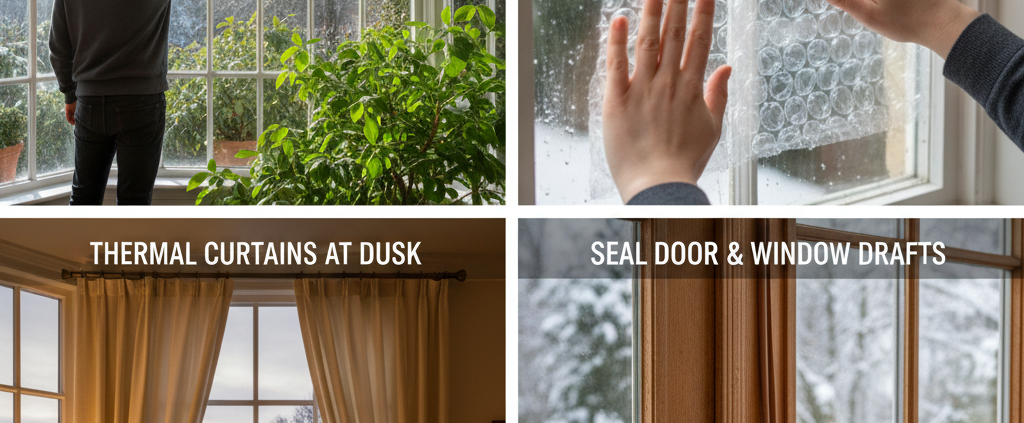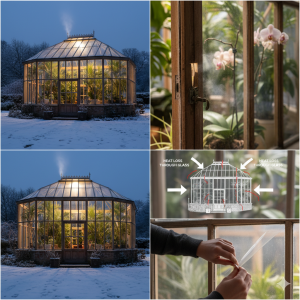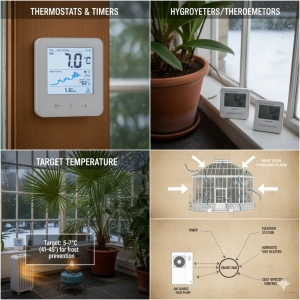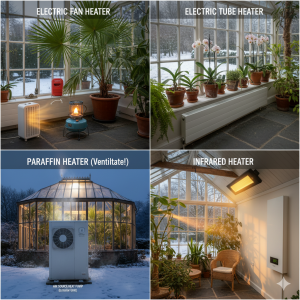Keeping Your Orangery Warm This Winter: A Guide to Cost-Effective Heating
As the days shorten and the chill sets in, your orangery, a beautiful extension of your home and a sanctuary for plants, can quickly lose its inviting warmth. Maintaining a comfortable temperature, especially for delicate exotic plants, becomes a priority. But how do you do this without sending your energy bills through the roof? This extended blog post will delve into various cost-effective strategies for keeping your orangery warm this winter.
Understanding Heat Loss in Orangeries
Before we discuss solutions, it’s crucial to understand why orangeries can be difficult to heat. Their expansive glass surfaces, while offering stunning views and light, are also major culprits for heat loss. Glass has a lower insulation value compared to solid walls, meaning heat escapes more readily. Additionally, drafts from ill-fitting doors or vents can contribute significantly to a colder environment.
Step 1: Maximize Natural Heat Gain
The cheapest heat is the heat you don’t have to pay for. Harnessing the sun’s power, even in winter, can make a surprising difference.
- Clean Your Glass: Dust and grime on your orangery’s glass panels can reduce the amount of sunlight entering. A good clean will allow more solar radiation to penetrate and warm the space during the day.
- Strategic Plant Placement: If you have deciduous trees or shrubs outside your orangery, ensure they are pruned to allow maximum sunlight in during the winter months. In summer, they can provide welcome shade, but in winter, you want all the light you can get.
- Thermal Mass: Consider incorporating elements with high thermal mass, such as dark-colored tiles or stone, within your orangery. These materials absorb heat during the day and slowly release it as the temperature drops in the evening. Water barrels painted black can also serve a similar purpose, absorbing solar energy and radiating it slowly.
Step 2: Seal Up Drafts and Improve Insulation
Preventing heat from escaping is often more cost-effective than generating more heat.
- Check Doors and Windows: Inspect all doors and windows for gaps. Weatherstripping and door sweeps are inexpensive solutions that can make a significant impact on preventing drafts.
- Glazing Upgrades (Long-Term Investment): If your budget allows for a more significant investment, upgrading to double or even triple glazing will dramatically improve insulation. Low-E (low-emissivity) glass is particularly effective as it reflects heat back into the orangery. While this is an initial outlay, it leads to substantial long-term savings on heating costs.
- Bubble Wrap Insulation (DIY and Temporary): For a very low-cost, temporary solution, you can line your orangery’s glass panels with large bubble wrap. Simply spray the glass with water, and the bubble wrap will adhere. This creates an insulating layer of air. While it might slightly obscure the view, it’s surprisingly effective for plants and can be easily removed in spring.
- Thermal Blinds or Curtains: Installing thermal blinds or heavy curtains on your orangery windows and doors can provide a significant insulating barrier at night when temperatures drop the most. Close them at dusk to trap the day’s warmth and open them in the morning to let the sun in.
Step 3: Efficient Heating Solutions (When Natural Heat Isn’t Enough)
Even with the best insulation, you may still need a supplementary heating source. Here are some cost-effective options:
- Electric Fan Heaters (Small Spaces/Emergency): For very small orangeries or for occasional boosts of heat during exceptionally cold spells, a small electric fan heater can be useful. However, they are generally not energy-efficient for continuous heating of larger spaces due to the high cost of electricity. Look for models with thermostats to prevent overheating and wasted energy.
- Electric Tube Heaters: These low-wattage heaters provide gentle, continuous background heat. They are ideal for maintaining a consistent minimum temperature without using a lot of electricity. They are particularly good for preventing frost in plant-heavy orangeries.
- Paraffin Heaters (Ventilation is Key!): Paraffin heaters are a traditional and relatively inexpensive way to heat a small to medium-sized orangery. They don’t require electricity, which can be an advantage. However, they produce moisture and fumes, so good ventilation is absolutely essential to prevent dampness and ensure air quality. Only use them in well-ventilated spaces and ensure you have a carbon monoxide detector.
- Propane Heaters (Similar to Paraffin): Similar to paraffin heaters, propane heaters offer a powerful heat source without electricity. Again, adequate ventilation is critical due to combustion byproducts.
- Infrared Heaters: Infrared heaters directly warm objects and people, rather than the air. This can be more efficient in a space like an orangery where much of the heated air would quickly escape. They are also silent and provide a comfortable, radiant warmth.
- Air Source Heat Pumps (Higher Initial Cost, Long-Term Savings): For larger orangeries or those you intend to keep consistently warm, an air source heat pump is a highly efficient, albeit more expensive, option. They extract heat from the outside air, even in cold temperatures, and transfer it into your orangery. The initial investment is higher, but the running costs are significantly lower than electric resistance heaters.
Step 4: Smart Heating and Monitoring
Even the most efficient heating system can waste energy if not managed properly.
- Thermostats and Timers: Crucial for any heating system. A thermostat will switch the heater off once the desired temperature is reached, preventing unnecessary energy consumption. Timers allow you to heat the orangery only when needed, for example, maintaining a minimum temperature overnight for plants, or warming it for your morning coffee.
- Hygrometers/Thermometers: Monitor the temperature and humidity levels within your orangery. This will help you understand how your heating solutions are performing and allow you to make adjustments. Different plants have different temperature and humidity requirements, so knowing these values is vital.
- Target Temperature: Don’t aim for tropical conditions unless absolutely necessary for your specific plants. Often, just keeping the temperature above freezing (around 5-7°C or 41-45°F) is sufficient for many overwintering plants, which will significantly reduce heating costs.








Leave a Reply
Want to join the discussion?Feel free to contribute!